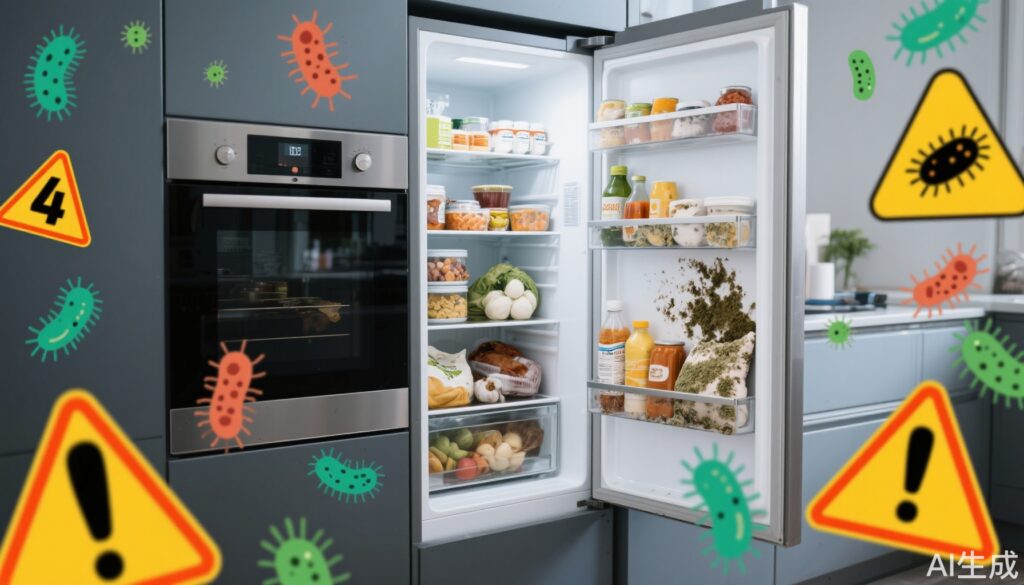Introduction: Cold Comfort or Hidden Danger?
For many households, the refrigerator is the ultimate symbol of food safety. After all, what could go wrong with keeping groceries chilled or frozen—don’t low temperatures keep our food fresh and safe? Yet, mounting scientific evidence suggests that improper or prolonged storage of certain foods in the fridge can invite hidden dangers, from foodborne illnesses to increased cancer risk. Let’s open the door (literally and figuratively) on what’s really happening inside your refrigerator.
Case Vignette: The Story of Mary’s Family Fridge
Mary, a working mom in Denver, prided herself on minimizing food waste. She’d often store leftovers, bulk meats, and snacks in her family’s refrigerator and freezer, confident that low temperatures would keep them safe for weeks or even months. One winter, after a bout of stomach upset swept through her household, Mary started to wonder: Could her trusted fridge actually be the culprit?
The Science: What Lurks in the Cold?
It’s true that refrigeration slows down the growth of many bacteria, but it doesn’t stop all of them. Some microbes not only survive but thrive in cold environments. Four notorious culprits stand out:
- Listeria monocytogenes: This resilient bacterium can grow at temperatures as low as 0°C (32°F) and persist in frozen foods for up to a year. Listeria can cause severe infections, especially in pregnant women, newborns, the elderly, and those with weakened immune systems.
- Salmonella: Commonly found in eggs and meats, Salmonella growth is slowed in cold, but not eradicated. Once foods are thawed or left at room temperature, bacteria can rebound quickly, leading to symptoms like fever, vomiting, and diarrhea.
- Shigella: Often found on unwashed produce, Shigella can survive in refrigerators and cause gastrointestinal illness.
- Yersinia enterocolitica: This lesser-known bacterium loves the cold, often residing in pork products and causing acute gastroenteritis.
A 2022 study in Chengdu, China, found that household refrigerators could harbor up to 29,000 bacteria per square centimeter—far exceeding hygiene standards for public utensils. Fungi, too, were present at significant levels (Zheng et al., 2022).
Myth-Busting: Misconceptions About the Refrigerator
Many people believe that freezing food is like pressing a ‘pause’ button on spoilage and bacterial growth. While freezing does halt most bacterial activity, it doesn’t kill all pathogens. Once thawed, bacteria can reactivate and multiply rapidly. Another common mistake is assuming that all foods are safe to store indefinitely. In reality, some foods become more dangerous the longer they sit, even in the cold.
The Three Foods You Should Never Store Too Long
Here are three categories of foods that deserve extra caution:
- Nuts and Seeds: Despite their healthy reputation, nuts are rich in oils that can go rancid, even in the fridge. Mold (including aflatoxin-producing species) can develop, especially if containers are not airtight or humidity is high. Aflatoxins are potent carcinogens linked to liver cancer (Wild & Gong, 2010).
- Cooked Leafy Greens: Spinach, kale, and other greens are high in natural nitrates. When stored for extended periods—even in the fridge—these nitrates can convert to nitrites, which in excess have been associated with an increased risk of gastric cancer (Song et al., 2015). Experts recommend eating cooked greens within four hours of preparation.
- Starch-Based Foods (Rice, Bread, Pasta): Starch retrogradation can make these foods hard, unpalatable, and difficult to digest. Worse, if stored too long, especially at fluctuating temperatures, they are susceptible to growth of Aspergillus molds that produce aflatoxins.
The Meat Myth: How Long is Too Long?
Many families, like Mary’s, keep meat in the freezer for months or even years. Studies show that while freezing keeps meat safe from most bacteria, the quality declines rapidly after a few months due to fat and protein oxidation. This not only affects taste and texture but also leads to the formation of harmful byproducts. According to the China Meat Research Center, the first three months are a period of rapid oxidation, after which meat quality deteriorates sharply (Meat Research Center, 2021).
When thawed, the resulting protein and water leakage creates an ideal environment for bacterial growth. Eating meat stored for too long or repeatedly thawed and refrozen increases the risk of food poisoning.
| Meat Type | Recommended Max Freezer Time | Risks After This Period |
|---|---|---|
| Beef | 6-12 months | Oxidation, off-flavors, texture loss |
| Poultry | 6 months | Freezer burn, nutrient loss |
| Pork | 6 months | Off-odors, bacterial risk when thawed |
Expert Insights: What the Pros Say
Dr. Jennifer Lin, a food safety specialist at the CDC, notes: “The refrigerator is not a sterilizer. Its main job is to slow down, not stop, the growth of microbes. Safe food handling and regular cleaning are essential.”
Practical Tips: How to Store Food Safely
- Shorten Storage Time: Most leftovers should be eaten within 4–6 hours or, at most, within 24 hours if refrigerated promptly. Avoid storing cooked leafy greens or rice overnight.
- Separate Raw and Cooked Foods: Always use separate containers or shelves to prevent cross-contamination. Invest in quality storage bags or containers.
- Clean the Fridge Monthly: Remove all items, unplug, and clean with soap and water. Regular cleaning prevents bacterial buildup.
- Freeze in Small Portions: Only thaw what you plan to use immediately. Avoid refreezing thawed meat.
- Check for Signs of Spoilage: Discard any item with off smells, colors, or visible mold.
Conclusion: Rethinking Refrigerator Safety
Your fridge is a valuable ally—but only if used with care. Blind trust in cold storage can backfire, leading to foodborne illness or even increased cancer risk from certain foods. By understanding which foods need extra caution and following safe storage practices, you can keep your family’s meals both delicious and safe.
References
- Zheng, Y., et al. (2022). Microbial contamination of household refrigerators in Chengdu. Chinese Journal of Microbiology, 48(3), 212–218.
- Wild, C.P., & Gong, Y.Y. (2010). Mycotoxins and human disease: A largely ignored global health issue. Carcinogenesis, 31(1), 71–82.
- Song, P., et al. (2015). Nitrate and nitrite in drinking water and food and the risk of gastric cancer: A meta-analysis. World Journal of Gastroenterology, 21(13), 3760–3770.
- China Meat Research Center (2021). Meat quality changes during cold storage. Meat Science Bulletin, 7, 41–47.
- Centers for Disease Control and Prevention. (2022). Food Safety at Home. https://www.cdc.gov/foodsafety/keep-food-safe.html


